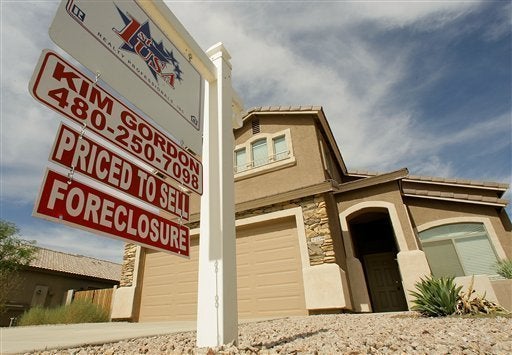
Over the next year or so, almost one trillion dollars could be injected into the banking and financial system. It almost seems like play money. Million, billion, trillion - what's the difference?
The collapse of major investment banks (have you heard about this yet?) was a major shock to our financial system. It's bleeding profusely - and the bailout is a dangerously thin tourniquet. The bailout, you see, is missing a major part of the problem.
We might benefit from the age-old wisdom that every business knows well: "It's the cash flow, stupid." Consistent cash flow has a neat way of solving most issues - it allows time for market fluctuations to damper out and it gives you the runway you need to ride out the rough patches. So, let's hone in on cash flow and figure out how the heck we got here.
We've muddled through the last three years, believing - like Chicken Little - that the sky was falling, but not acting on it. First, it was the air hissing out of the housing market, something that was heard round the country. The upward trajectory of housing prices reversed and then flat-lined, which caused outright panic among speculators targeting the quick flip. That in itself caused minimal angst because it drove speculators from the market and Joe Sixpack (yep, that Palinian term again) could get back to the business of slow and steady appreciation in home values. But the government was a no-show on this one, and didn't step in to stave off the ruin of small real estate investors.
Next was the reset of many ARM (adjustable rate mortgage) home loans that were on one-year and three-year terms. Suddenly, Greenspan raised rates and the associated payments on mortgages went up. Abruptly the same homes that people thought they could afford - and did afford for the 1-3 year periods when they were making payments - were no longer affordable.
The fortunate ones sold their homes in a still-robust market, recovered some equity, and downsized. The unfortunate ones still held firm to the belief that the home was a bastion for retained value and that they could refinance. This didn't happen and foreclosures thus became de rigueur for banks and owners. Where was the government at this point?
Banks then started seeing a ripple effect downstream in the flow of funds from mortgage payers that had begun to default. (For more on the mechanics of this, see my blog post from Dec. '06 that estimated the toll at $600 billion, which ended up pretty close to the original bailout.) Still no appearance by the government. (If this reads like a rolling snowball gathering mass and momentum, you're with me.)
Now the kings of finance (i.e., investment bankers and their banking brethren) are hit - hard -and we have a calamity on our hands. Now the Feds are involved. The thing is, the majority of the pain has already occurred - on the consumer end. The burden of recouping the cost of the bailout will weigh heavily on an entire generation. Will we come out ahead in 25 years? Who knows. But, the core problem is still not solved.
To state the obvious so it's not lost: I am not against the bailout. I think now it is required. But, federal infusions to banks, moratoriums on foreclosures, tax relief for certain groups, etc., do not address one of the more serious and glaring issues. You must eliminate the mechanism that introduces shocks to the economic system on the mortgage front, the most prevalent of which is the ARM. Solving this will solve cash flow issues to bonds and all their associated derivative offshoots.
Remember: It was always about the cash flow, stupid.
For more on ARM loans, see the remainder of this article on the Centrro blog.